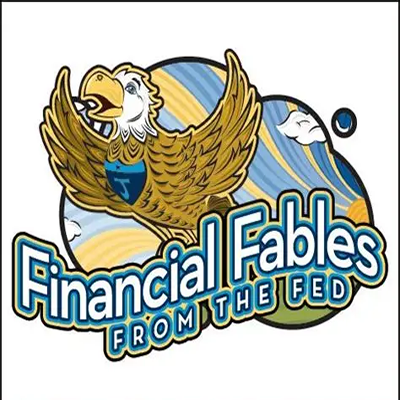Financial Fables
Financial Fables are entertaining stories that combine reading, economics and personal finance into life lessons that feature "money morals."
{{searchResultSnippet}}
 Back to All
Back to All

This video assignment helps students understand that people have to save to get the things they want. Daniel wants a new bike helmet and must earn income and save to reach his goal.
Below is a full transcript of this video. It has not been edited or reviewed for accuracy or readability.
Narrator: How Daniel Got What He Wanted
Daniel’s new bike is so fast.
He can even do tricks on it at the skate park.
Daniel wishes his helmet was as cool as his bike.
His friends have unicorn helmets, and Viking helmets, and princess helmets, and spike helmets.
Daniel has a boring black helmet.
When the street lights come on, Daniel says goodbye to his friends and rides home. His helmet casts a smooth shadow on the sidewalk.
That evening, Daniel can’t stop wishing he had a mohawk helmet.
Daniel: Dad, can I get a new helmet?
Narrator: Daniel’s dad thinks for a moment.
Daniel’s Dad: If you want a different helmet, you can use your own money to buy one.
Daniel: But I only have $15 in my savings account and the helmet costs $35. By the time I save enough, I will be 50 years old!
Narrator: Daniel’s dad laughs and pulls the calendar off the wall.
Daniel’s Dad: Let’s figure out just how long you will need to save. How much money do you earn each week for walking Mrs. Reed’s dog?
Daniel: I get $5 every Saturday.
Daniel’s Dad: Let’s mark the calendar for each week you will need to save. Since you already have $15 in your savings account, let’s start at $15.
Narrator: Daniel and his dad count by fives,
Daniel and his Dad, together: $20, $25, $30, $35.
Daniel: That’s only four weeks! I can do that!
Narrator: On Saturday, Mrs. Reed pays Daniel $5 for walking Fluffy.
Daniel runs inside.
Daniel: Mom! Mom! Can we go to the credit union and deposit my money?
Daniel’s Mom: Sure! But first, I have a surprise. I am taking you and your sister to the zoo today! We can stop at the credit union on the way home.
Narrator: Daniel likes the otters best. They swim and splash and make Daniel and his sister laugh. As they walk away from the otters, Daniel sees a display of otter stuffed animals. The sign says, “Otters on sale, $10”.
Daniel reaches into his pocket, but he only has the $5.
Daniel: I really want one of those otters, but I don’t have enough money.
Narrator: Daniel’s sister, Allie, takes a five-dollar bill out of her wallet.
Allie: Here, you can borrow five dollars from me, but you have to pay me back next week.
Narrator: Daniel jumps up and down.
Daniel: Thank you, Allie!
Narrator: As they drive away from the zoo, Daniel starts to feel sad.
Daniel’s Mom: What’s wrong?
Daniel: I don’t have any money to deposit in my savings account.
Narrator: Daniel feels tears on his cheeks.
Daniel: I have to pay Allie back, and I have to make up for spending my own five dollars today. That is two extra weeks of saving! It is going to be six weeks before I have enough for my goal.
Narrator: Daniel feels the soft fur of the otter in his arms.
Daniel: I do have this cute, fuzzy otter, though.
Narrator: Daniel smiles and hugs his otter all the way home.
Daniel sleeps with his otter ever night that week. On Saturday morning, when Mrs. Reed pays him $5, he is less excited than usual. Daniel walks slowly up to Allie’s room.
Allie: Want to color?
Daniel: Sure, but first I want to pay back the money I borrowed.
Narrator: As Daniel hands the money to Allie she smiles.
Allie: Thank you so much!
Narrator: Seeing Allie smile makes Daniel feel better. He grabs his favorite color and starts coloring.
Three weeks go by and it is Saturday again. Daniel has his $5 from Mrs. Reed. He and his mom drive to the credit union. He fills out his deposit slip and hands the slip and money to the teller.
Then he carefully writes down the date and his deposit amount in his account register.
As he adds up the total, Daniel realizes he is only one week away from meeting his goal.
Daniel: Next week is the week, Mom! I can’t wait to go to the bike shop and pick out my new mohawk helmet.
Narrator: It is getting late at the skate park. Daniel and his friends have been riding all afternoon. When the street lights come on, Daniel waves goodbye to his friends.
Daniel: See you tomorrow!
Narrator: As Daniel rides home, his new mohawk helmet casts a spikey shadow on the sidewalk.

Financial Fables
Financial Fables are entertaining stories that combine reading, economics and personal finance into life lessons that feature "money morals."

Saving Strawberry Farm
Learn that saving is essential to economic well-being.

The Inventor's Secret: What Thomas Edison Told Henry Ford
This lesson focuses on innovation ad production through the story of Edison and Ford.

The Berenstain Bears: Old Hat New Hat
Learn about preferences and how they help us make choices.

On the Court...with Michael Jordan
Introduce the idea of opportunity cost and the PACED decision-making model.

So Few of Me
Learn about scarcity, alternatives, choices, and opportunity costs

Scarcity and Opportunity Cost
Introduce the term "scarcity".

Consumers and Producers
Understand that people are both producers and consumers.

Goods and Services
Explain that people buy and use both goods and services.

Saving and Savings Goals
Introduce the terms "saving" and "savings".

The Economics of Infrastructure
Show how infrastructure supports the operation of an economy.

The Economics of Transportation
Shows how changes in technology changed the way people move goods.

The Perfect Breakfast
Understand why people trade.

What Makes Something Useful as Money?
Explain what makes something useful as money.
{{resourceTitle}}
{{resourceBlurb}}